We woke up to a beautiful morning in Packwood, Washington just outside of Mt. Rainier National Park. Our Chicago friends Mick and Suzy had done well during their low elevation introduction to the park (see part 1). It was time to take them up on the mountain.
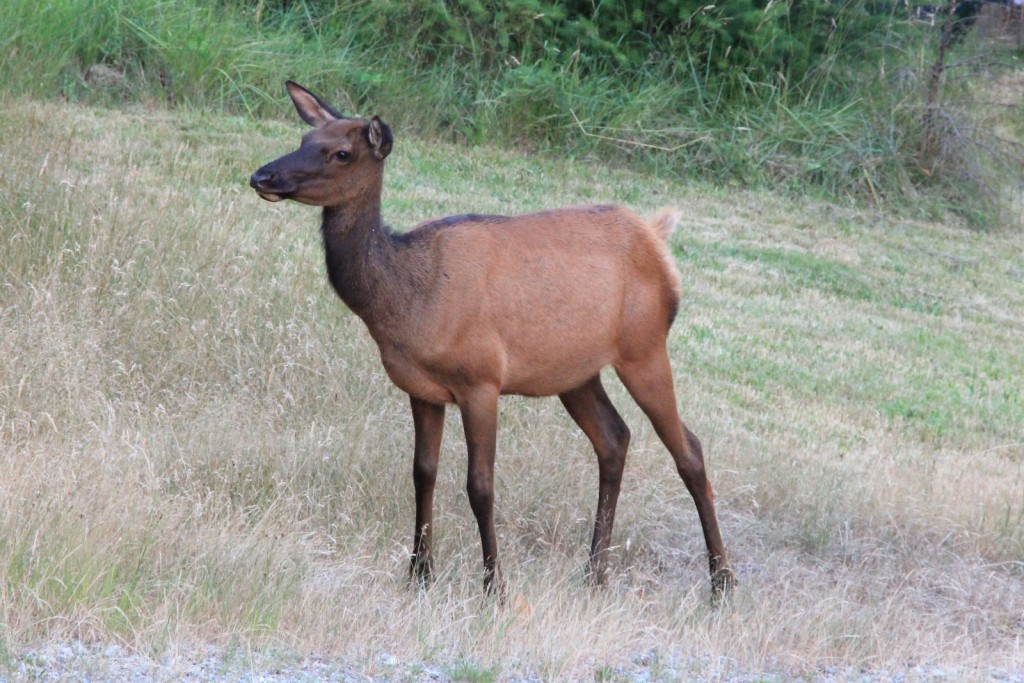
We entered the park through the Stevens Canyon entrance and made the beautiful drive to Paradise. Mick and Suzy seemed impressed by the elevation gain as we climbed from 1,900′ to 5,400′. There are some impressive drop offs and views into the Tatoosh Wilderness area as you climb.
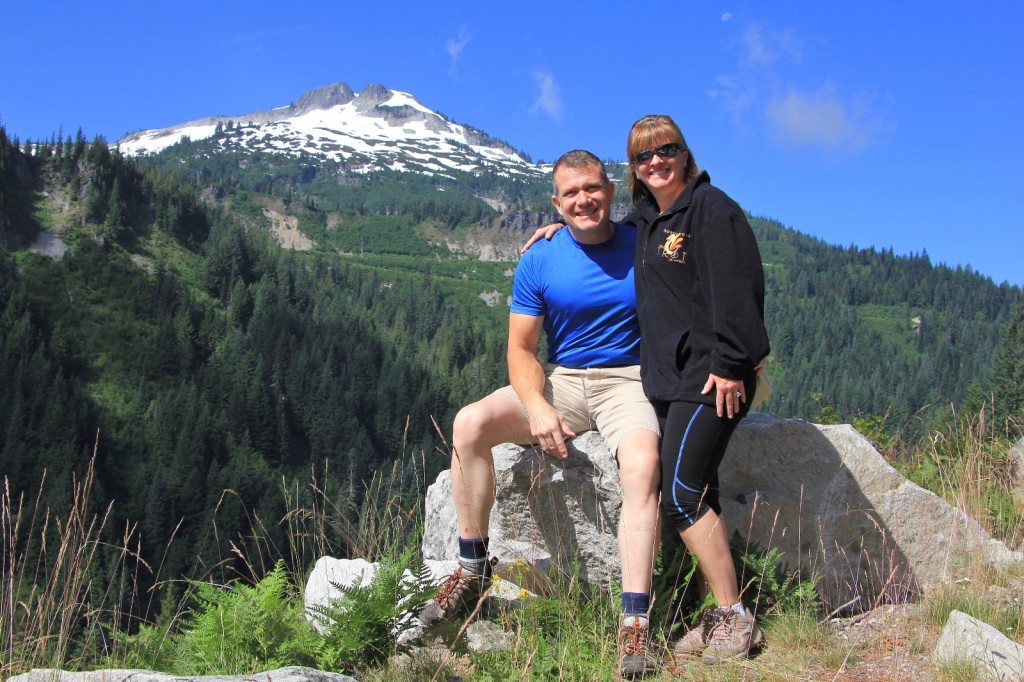
Paradise sits on the south side of the mountain and is the busiest area of the park. It is difficult to find solitude here on a beautiful July day, but the views more than make up for the masses. And like most parks, the crowds lighten with each step taken away from the visitor center.
I had been watching the Paradise webcam for weeks, so I was prepared for the snow we would encounter on the trail. We’d be snow hiking for most of the day. I had hoped to hike the entire Skyline Trail up to Panorama Point and then down the east side past Sluiskin and Myrtle Falls to Paradise. Jason and I had hiked this loop back in 2012 and rated it one of our top hikes ever. I checked in with the rangers and they recommended not attempting the entire loop due to the large volumes of snow still covering the trail. We’d be ok up to Panorama Point thanks to markers placed in the snow; however, they said we likely could not navigate the trail down the far side. Since we had only been on the trail once before, we took their advice without hesitation. Paradise to Panorama Point is still a worthy hike, even if we had to make it an out and back.
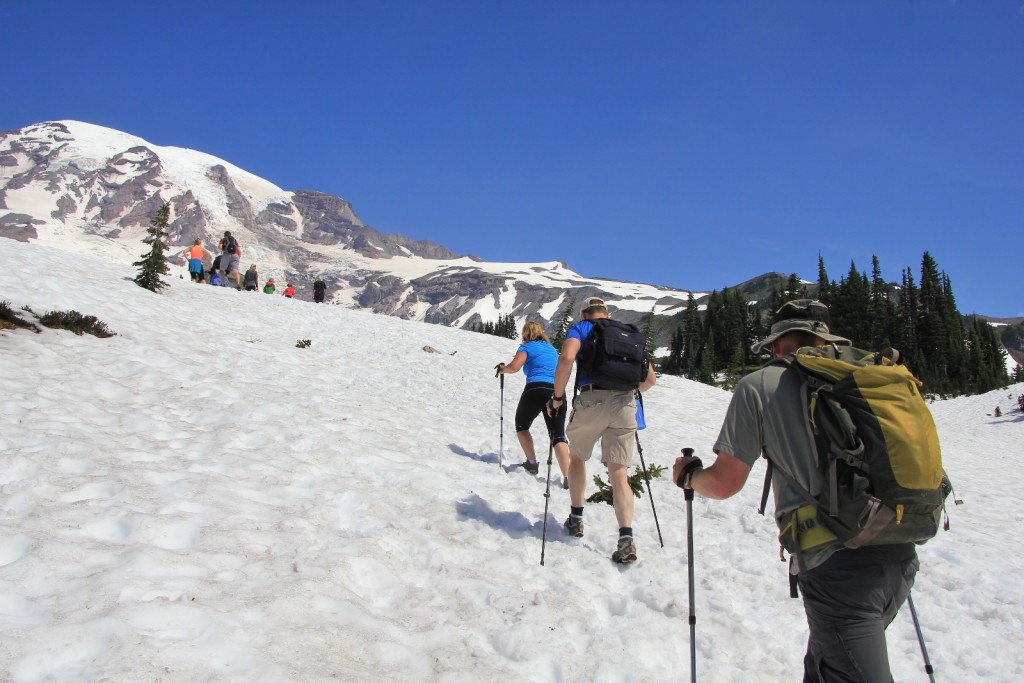
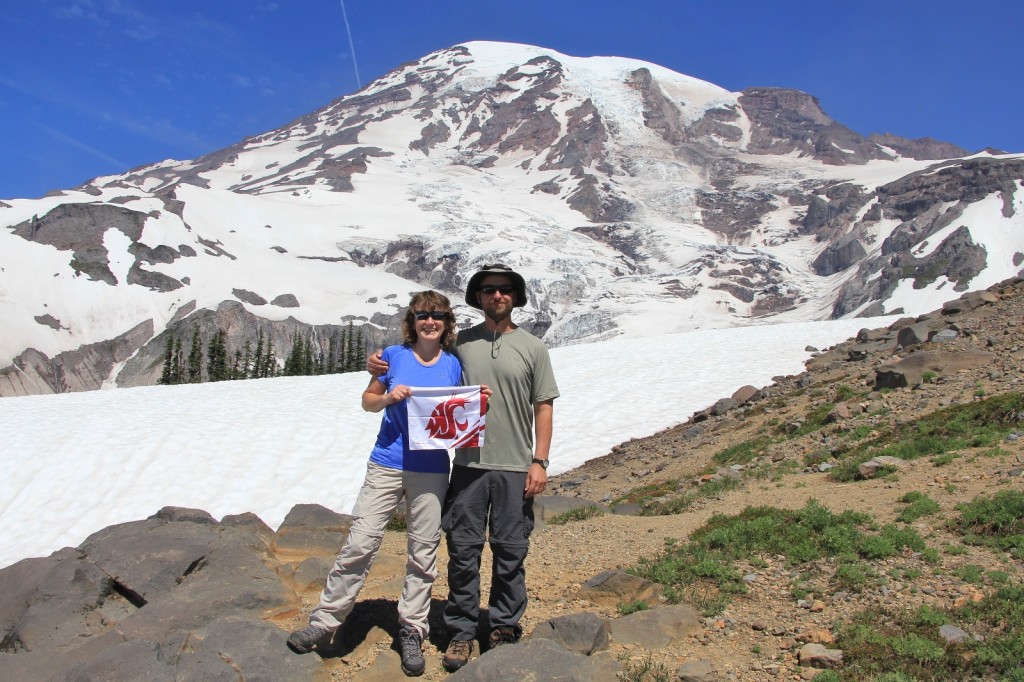
We hit snow almost immediately after leaving the Paradise parking area. We hit occasional dry patches, but we spent most of the day kicking across a winter wonderland. Fortunately, the white stuff was already soft from the July sun, so it was relatively easy going.
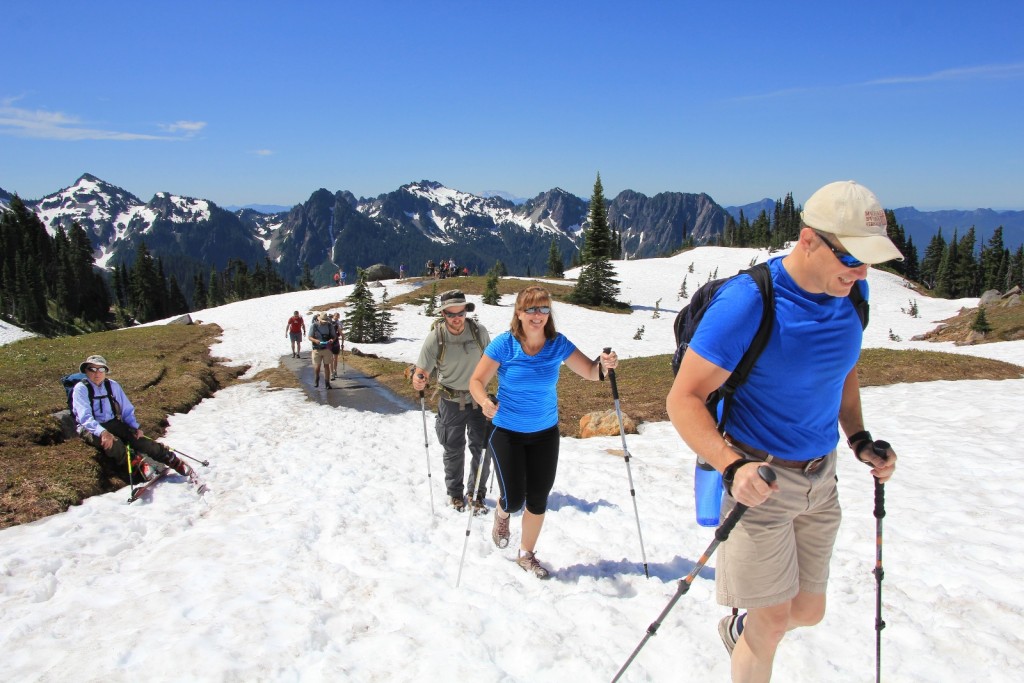
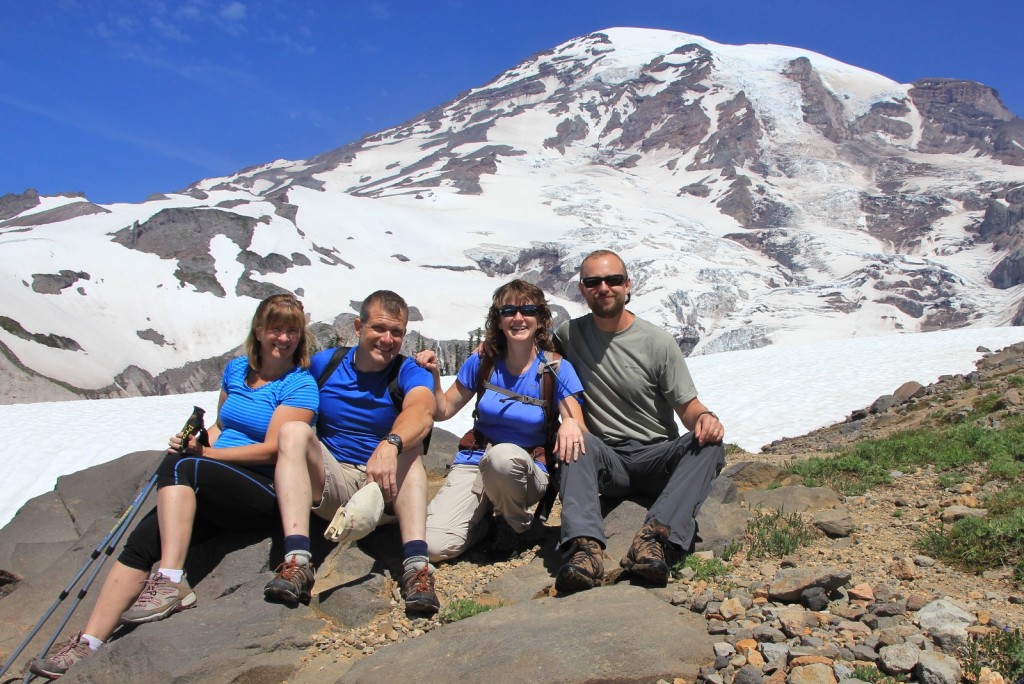 The hike up the Skyline Trail is a feast for the eyes. Mt. Rainier and her Nisqually Glacier are straight in front of you for your entire climb. Behind you, Mt. Adams, Mt. St. Helens, and Mt. Hood rise from the southern horizon. Later in the season, the ground is carpeted with a sea of colorful wildflowers.
The hike up the Skyline Trail is a feast for the eyes. Mt. Rainier and her Nisqually Glacier are straight in front of you for your entire climb. Behind you, Mt. Adams, Mt. St. Helens, and Mt. Hood rise from the southern horizon. Later in the season, the ground is carpeted with a sea of colorful wildflowers. 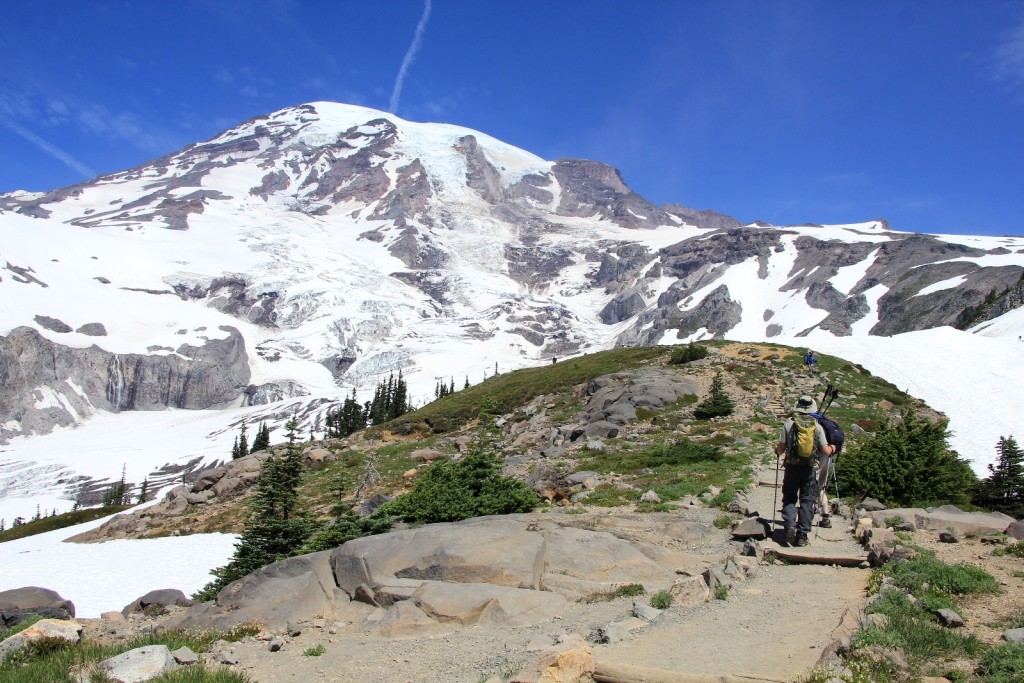
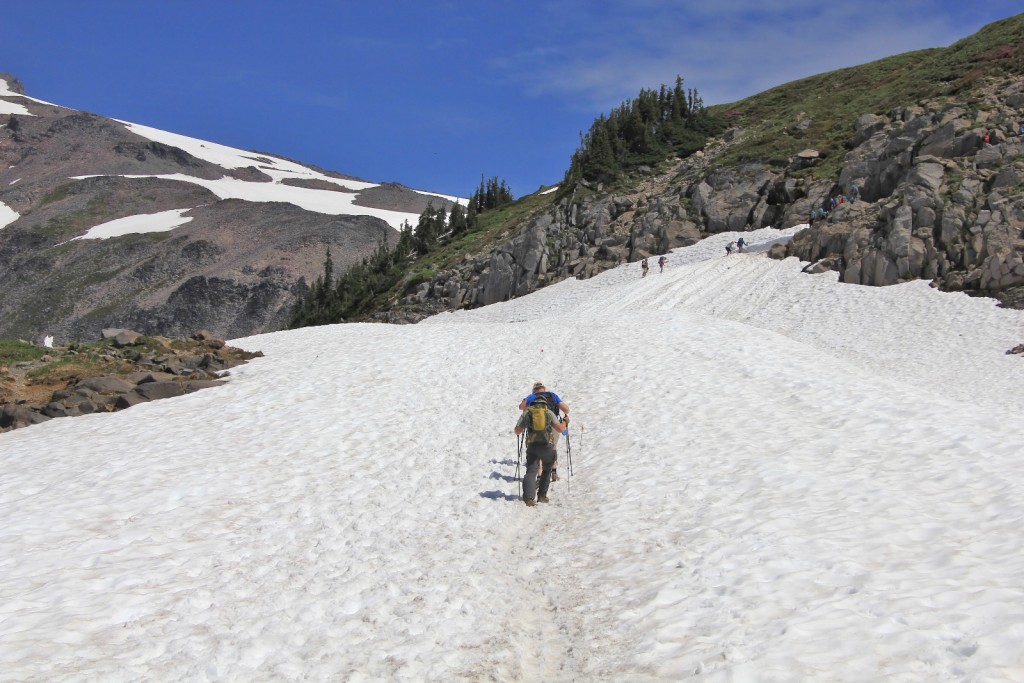
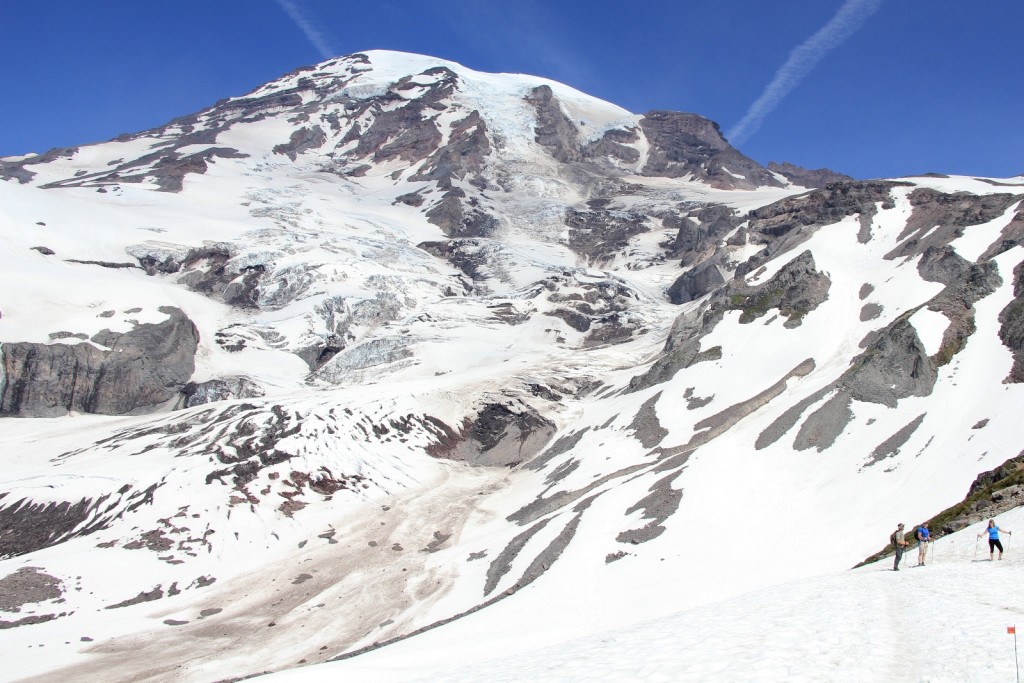
By the time we reached the side trail to Camp Muir, we lost most of the crowds. The bulk of the tourists had turned back about 1,000 feet earlier and the hard core climbers had turned off toward Muir. After crossing over a narrow snow ledge that had collapsed in at the middle, it was clear sailing to Panorama Point.
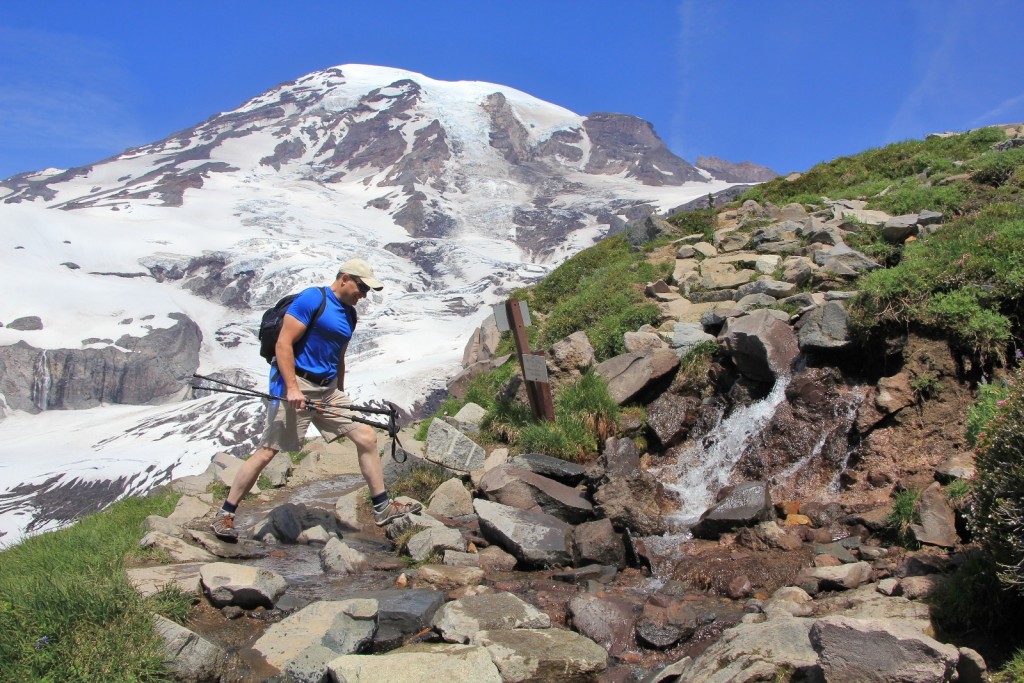
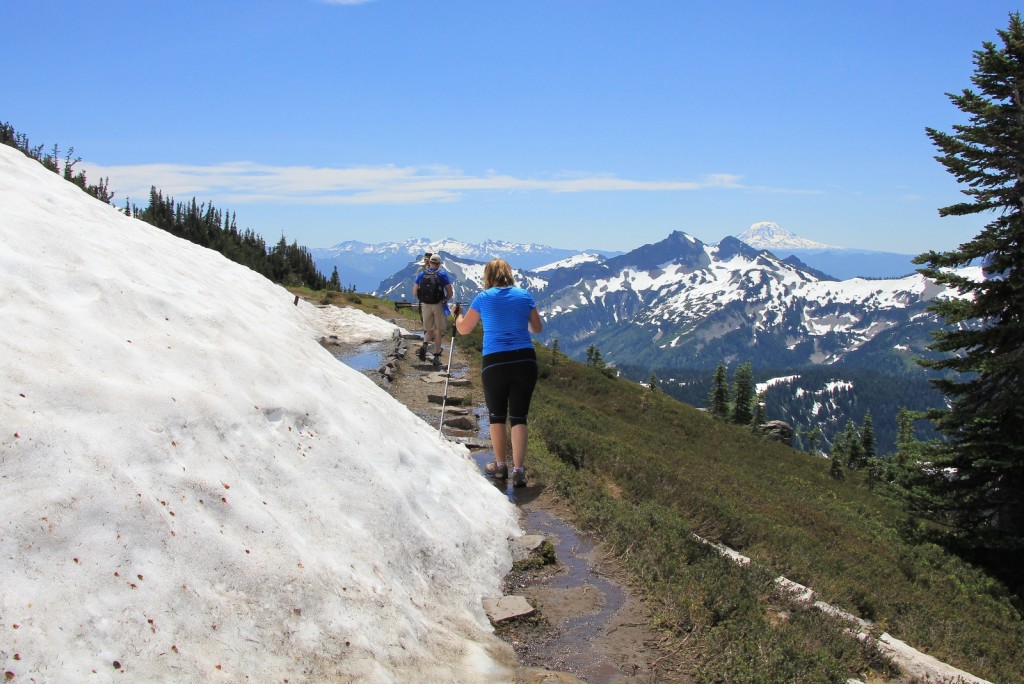 Just above Panorama Point is one of the more interesting outhouses I’ve come across. It is built of stone into the side of the mountain. Inside is a sign reminding hikers to please shut the door when they vacate the facilities. It seems that marmots like to go inside and easily become trapped.
Just above Panorama Point is one of the more interesting outhouses I’ve come across. It is built of stone into the side of the mountain. Inside is a sign reminding hikers to please shut the door when they vacate the facilities. It seems that marmots like to go inside and easily become trapped.
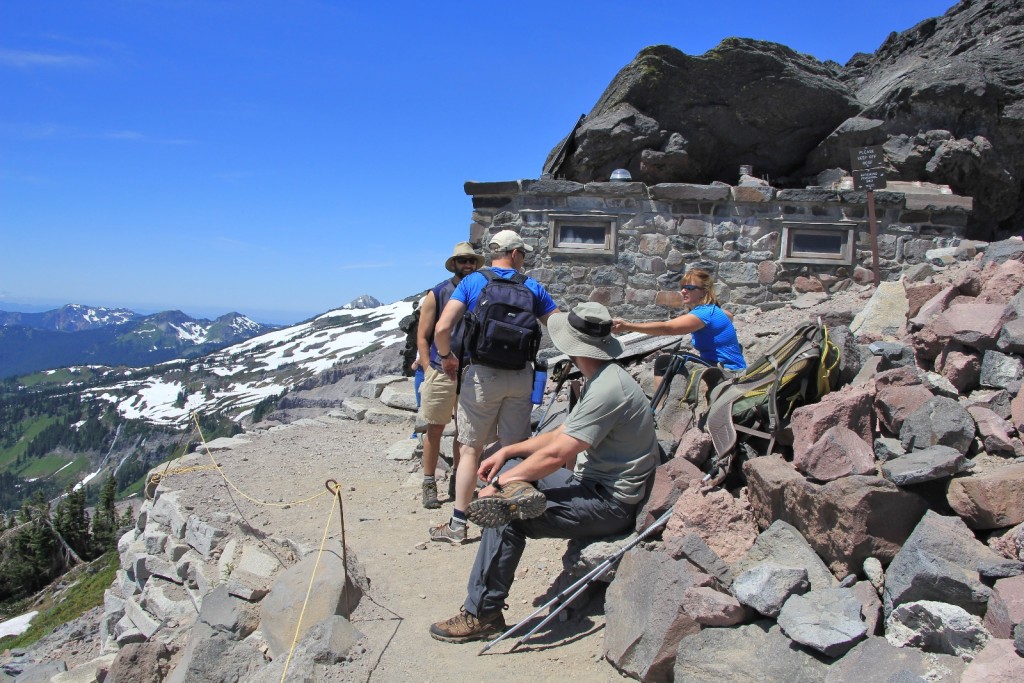 The view from Panorama Point is breathtaking. Far below is the Paradise Lodge and Visitor Center. It is fun getting to look down and see how far you climbed. On the southern horizon, Mt. Adams, Mt. St. Helens, and Mt. Hood loom in distance (Mt. Adams and St. Helens shown here).
The view from Panorama Point is breathtaking. Far below is the Paradise Lodge and Visitor Center. It is fun getting to look down and see how far you climbed. On the southern horizon, Mt. Adams, Mt. St. Helens, and Mt. Hood loom in distance (Mt. Adams and St. Helens shown here).
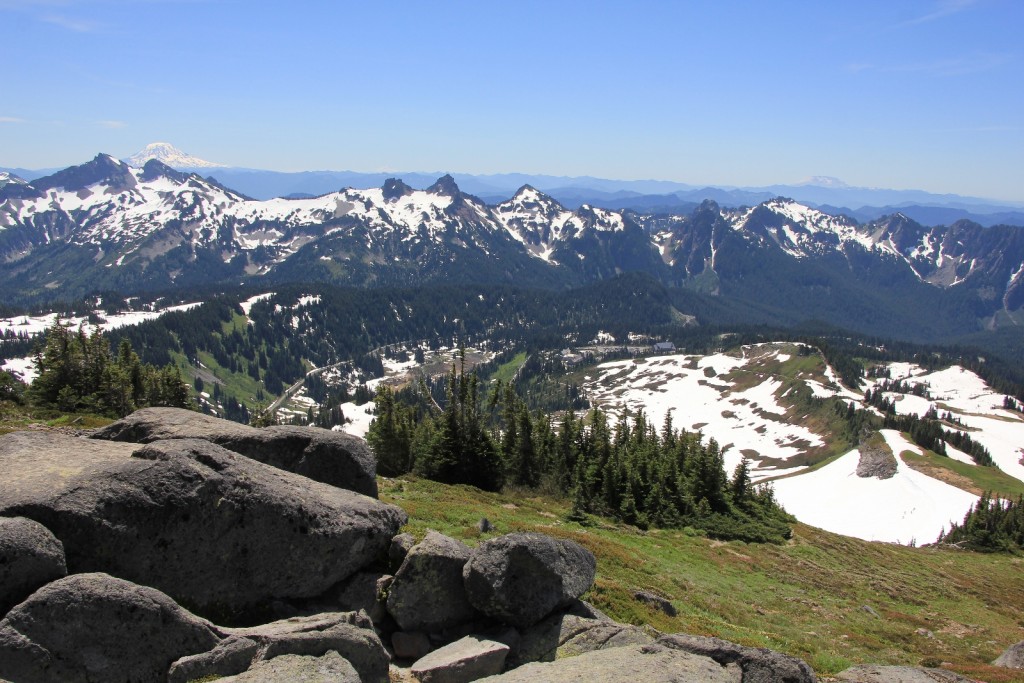 I was concerned that our hike down would be a slick one, but fortunately the snow was soft enough from the afternoon sun that we easily descended back to Paradise.
I was concerned that our hike down would be a slick one, but fortunately the snow was soft enough from the afternoon sun that we easily descended back to Paradise.
Mick and Suzy did great with their first alpine hike. It was good that we got our snow legs under us a bit, because the next day’s hikes would be even more challenging.
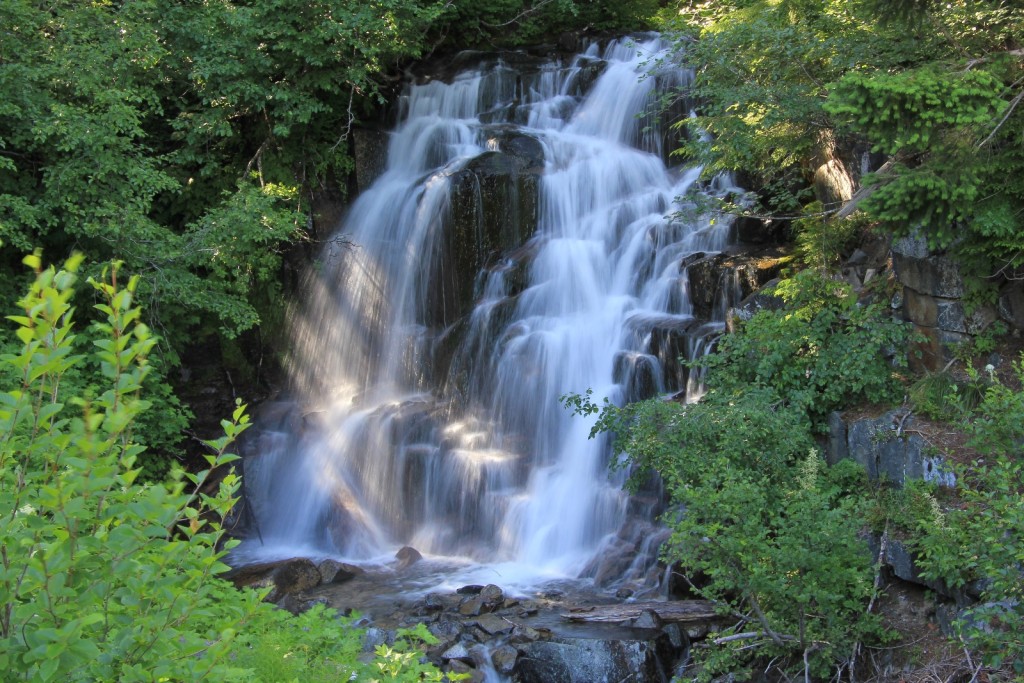
So much snow! Snow seems like a distant memory if you live in the west this year doesn’t it?
Lisa, yes, such a different year! I looked at the Paradise web cameras last week and it looks about the same as it did early July last year! We’re all planning for a big wildfire year in the PNW unless something drastically changes.